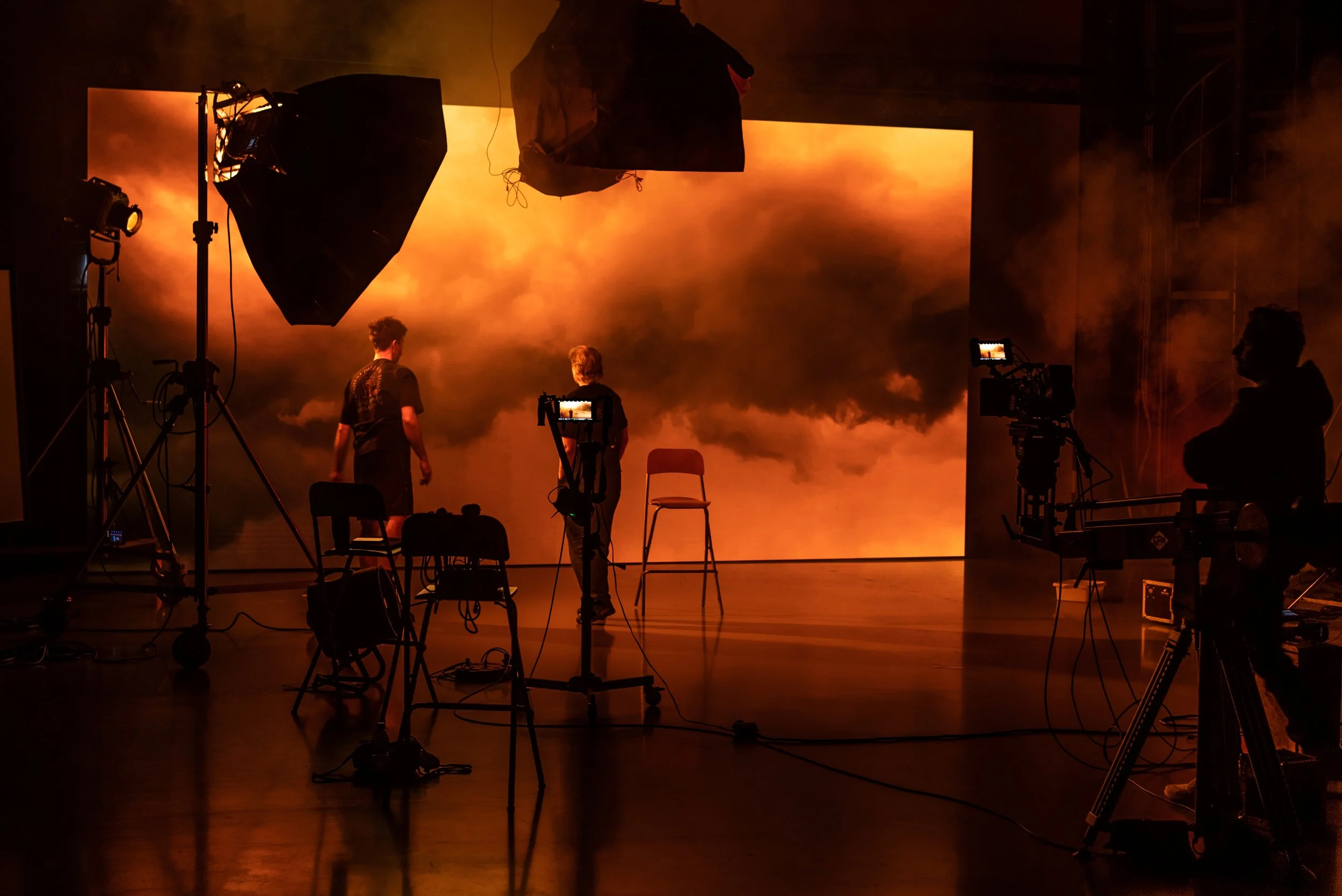FAQs
What's the benefits of LED Virtual Production?
LED virtual production lets filmmakers see final environments live on set, instead of waiting for post-production. It reduces green screen limitations, creates natural lighting and reflections, and saves time and budget by combining real performance with digital worlds in real time.
What kinds of productions is LED virtual production best suited for?
Commercials, music videos, narrative film, product shoots, and car sequences all benefit from LED virtual production.
Do you offer previsualization before the shoot?
We provide test renders, camera previews, and tech checks so you can plan shots before arriving on set.
Can we film both day and night looks on the LED?
Yes! Lighting and backplate content can be adjusted to simulate any time of day, from bright daylight to night scenes, with full creative control.
What kind of LED do you use?
We utilize the AOTO RM2.3e LED display paired with the award-winning Brompton Tessera SX40 processor. The screen measures 7m × 3.5m with a resolution of 3024 × 1512 pixels. It features a 2.3mm pixel pitch and a brightness of 1600 nits.
Are there any camera requirements when shooting with an LED?
We recommend using a genlock-compatible camera. While a global shutter camera offers advantages, it is not essential.
Most cinema-grade cameras, such as those from ARRI, RED, and Sony, are suitable. However, cameras with a slow rolling shutter may produce dark horizontal lines on the screen during rapid tilts.
What frame rates can we shoot with the LED?
Safe frame-rates are 24, 25, 30, 50, 60, 96. If you have any other frame rate in mind, please let us know.
Can we use videos or stills on the LED?
Yes. The LED display has a native resolution of 3024 × 1512 pixels, with a 2:1 aspect ratio. Our playback system is compatible with most video and still image formats.
Video: We recommend using 10-bit ProRes HQ or 4444. Avoid highly compressed video files, as they may cause artifacts, and note that 8-bit color can result in visible banding. Ensure the frame rate matches the one you'll use during the shoot.
Stills: Preferred formats include .tif, .exr, or .png. Jpeg is also supported, but it is limited to 8 bit per color channel.
Can I bring my own Unreal Engine project?
Virtual production requires the project to be set up correctly. You can bring your own project, but we have to prepare it for our system and the LED volume.
Can you help design custom environments?
Absolutely! Our team can create or adapt environments in Unreal Engine, or collaborate with your design/CG partner.
How big is the Studio?
Arabia B-Studio covers an area of 250 square meters, measuring 18m × 13m. For further details, please visit Angel Films website.
Do productions have to take place at Studio 135?
No, our LED can be relocated to other venues. If you’re interested in arranging a production off-site, please get in touch at hello@formlos.fi
What software do you use for backplates?
We utilize Assimilate LiveFX, enabling real-time color grading of footage displayed on the LED.
How close can we shoot to the LED
The LED wall features a 2.3mm pixel pitch. As a general guideline, maintaining a 2.5m distance from the screen helps minimize moiré. However, if the LED is out of focus, you can position the camera as close as desired. This ultimately depends on the camera sensor and chosen focal length.
Is sound recording possible on set?
Absolutely. Studio 135 is soundproofed and optimized for recording sync sound alongside LED playback.



